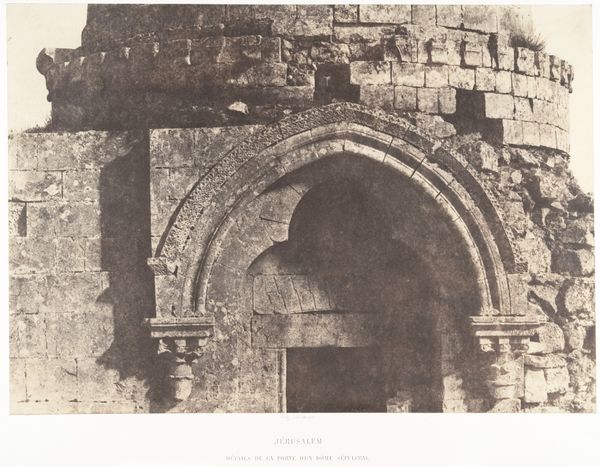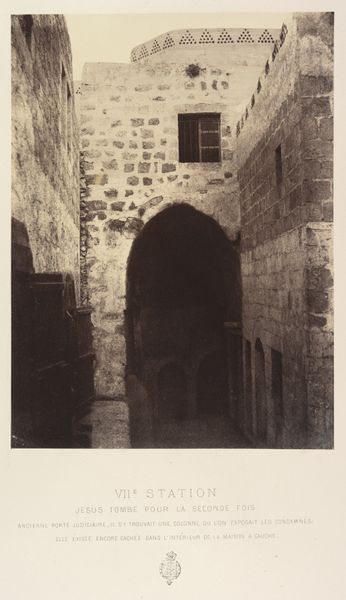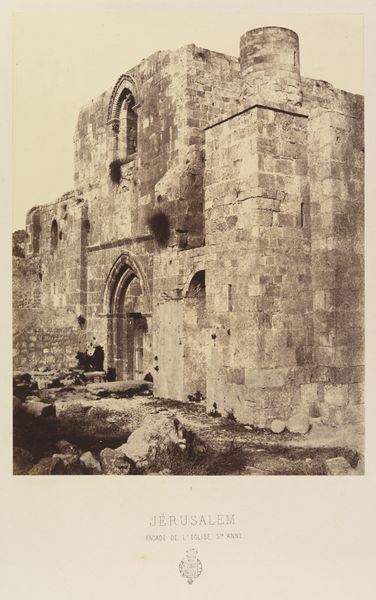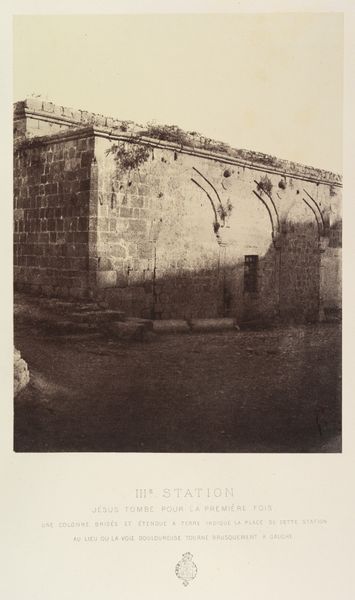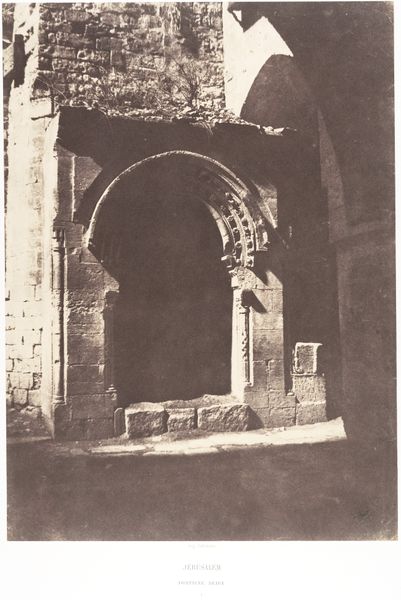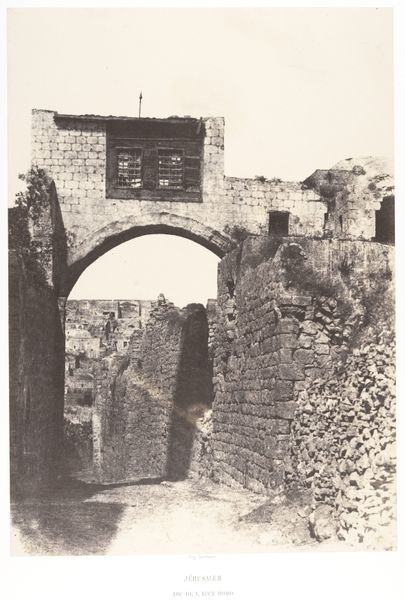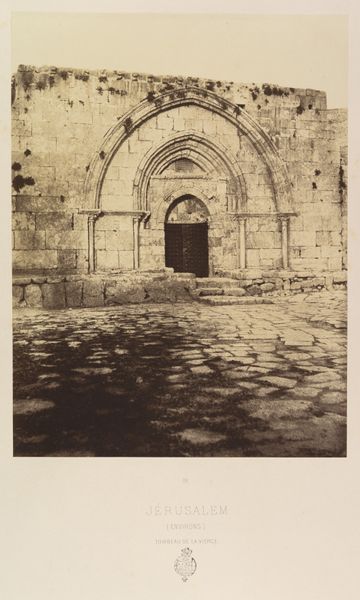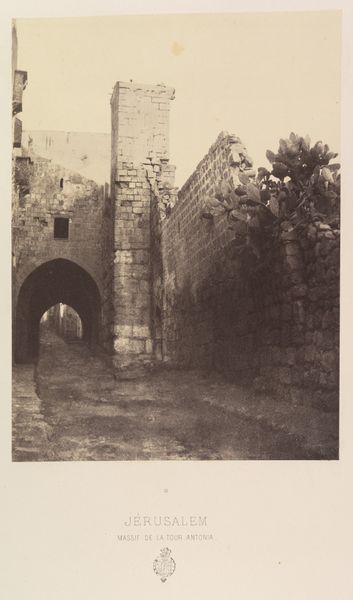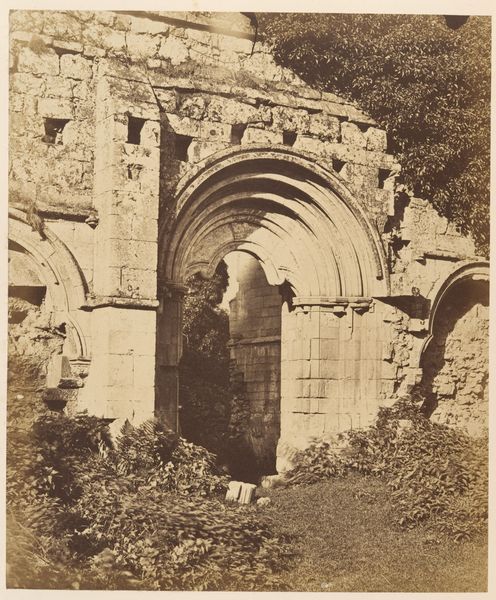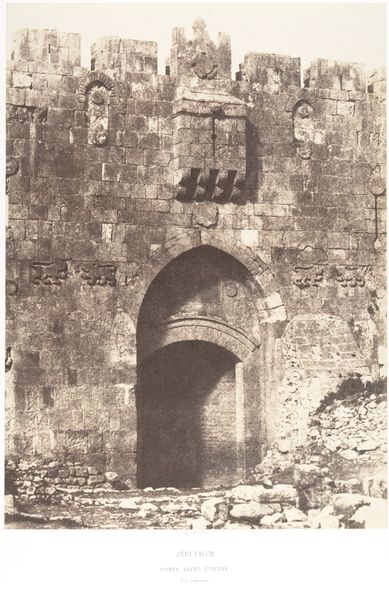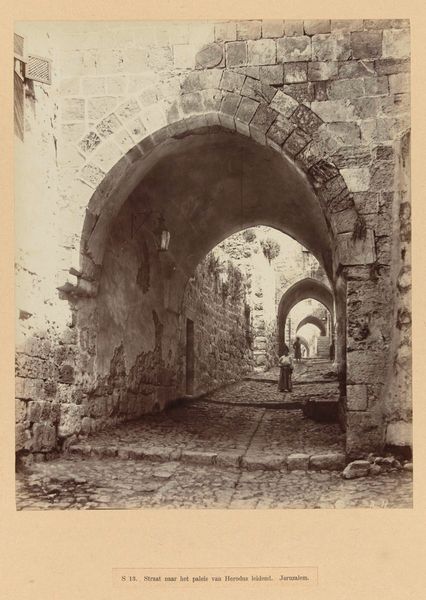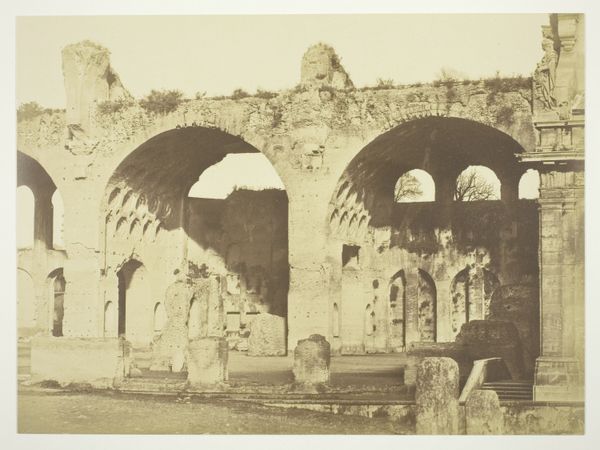
photography, albumen-print, architecture
#
photography
#
arch
#
cityscape
#
albumen-print
#
architecture
Dimensions: Image: 11 in. × 8 9/16 in. (28 × 21.7 cm) Mount: 17 15/16 × 23 1/4 in. (45.5 × 59 cm)
Copyright: Public Domain
Curator: The silence is profound, isn't it? Even in this still image. Editor: It's immense! There's something so imposing and austere about this photograph. It almost feels... archaeological. Curator: It is, in a way. This is "Jérusalem. Porte de Damas (Bab-el-Ahmoud)," an albumen print created around 1860 by Louis de Clercq. We see the Damascus Gate in Jerusalem. Editor: An albumen print – so that warm sepia tone is baked right into the image. I notice how de Clercq uses shadow to carve depth, that huge opening acting as a powerful symbol, a threshold. But to what, or where? Curator: Symbolically, a gate often represents transition, or access to a new space. But in reality, it regulated social and economic passage, it facilitated control and taxation. Gates are built as much to keep people out as they are to invite them in. Editor: True. I was focusing on the gate as passage, perhaps influenced by Jerusalem's role as a focal point for multiple faiths. Do you think its circular decorations are accidental? Curator: Knowing this place and time, nothing would be accidental. Circular forms recur in historical sacred sites. But I would guess these are representations, rather than functional shields or ornaments. Their placement invites inquiry. Are they complete? Are they damaged? Can you even be certain they are the original decorations? Editor: You mean have these disks been a symbol hijacked from a religion that came earlier. Interesting... because de Clercq shot this gate right in the middle of a surge of European interest in the Holy Land. He’s framing this ancient site at a key moment in modern, western imperialism. The very act of documenting it gives it a specific cultural weight. Curator: Absolutely. He's not simply recording, he's interpreting through his lens. Consider what choices he makes – the light, the angle, the stillness. The lack of figures... all speaks volumes about his view of Jerusalem. This is as much about the West's projection as the East's reality. Editor: It is difficult not to interpret photography through the cultural and political landscape of its time, which seems to be just what the photographer had intended. Curator: Indeed, it compels us to revisit not only that historical crossroads but the continuous act of interpreting cultural symbols and meanings across generations.
Comments
No comments
Be the first to comment and join the conversation on the ultimate creative platform.
